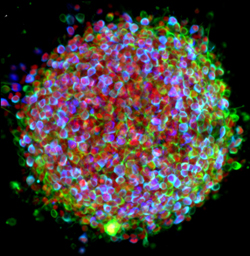This semester as an elective I am taking another course in the zoology department (the first being Patricia McConnell’s Human and Animal Relationships last semester). In Zack Peery’s Extinction of Species we have been discussing the role that institutions like zoos play in helping to preserve and ensure the survival of rare species. Often we think of zoos in terms of their enjoyment factor for humans or conversely the lack of enjoyment (we think) that animals have being caged. I’ve visited the zoo here in Madison and had a nice time being there with my family, but I was definitely thinking about the care and condition of the animals. Now, I thought all of the animals in the zoo I visited looked healthy and happy, but it did get me thinking overall about how important zoos are for the care and conservation of animals, particularly those that are rare or in need of special healthcare.
Zoos play an important role in conservation efforts, because the good ones provide animals with a safe place to live that is protected from outside threats (predators, pollution, loss of habitat, etc.), in addition to access to veterinarians. I was reminded of this fact when I saw the story of Manukura, a rare white kiwi being covered by the BBC. Not that we really needed further proof that a good cute animal story is going to make it into the news, but I wanted to mention the kiwi story because I think it is a good example of the public rallying behind a very charismatic animal, and a zoos effort to save and protect it.
 |
| Manukura. Source: Zooborns |
A kiwi is a flightless bird that lives only in New Zealand, and is similar in size to a chicken. There are five species of kiwi, which are all endangered. Kiwis are typically brown or tan in color, but as a result of a naturally occurring genetic mutation Manukura was born white (note that this isn’t the same as being an albino). Manukura was living in Pukaha Mount Bruce National Wildlife Center when rangers noticed that the six-month-old bird wasn’t eating. Veterinarians at New Zealand’s Wellington Zoo were called in to examine the bird and found that two large stones were obstructing its intestines.
Manukura was able to pass one of the stones naturally, but the other had to be taken out by a urology specialist from Wellington Hospital who broke the stone up with a laser and then removed the pieces with an endoscope. According to the Wildlife Center, the procedure was comparable to the removal of kidney or gall stones in a human. The bird is doing well following her procedure, much to the joy of her Facebook followers who were able to follow her progress throughout the ordeal.
I think that this story is a great case study for a lot of the topics that we’ve been discussing in my zoology class. It shows a viable option (the creation of wildlife refuges) for the conservation of a species, how a the public can rally behind a species that is particularly like able and important (the kiwi is a national symbol of New Zealand), how zoos can provide access to resources necessary to save an animal, and how communication with the public (particularly through social media) is an important part of conservation and animal protection efforts.



